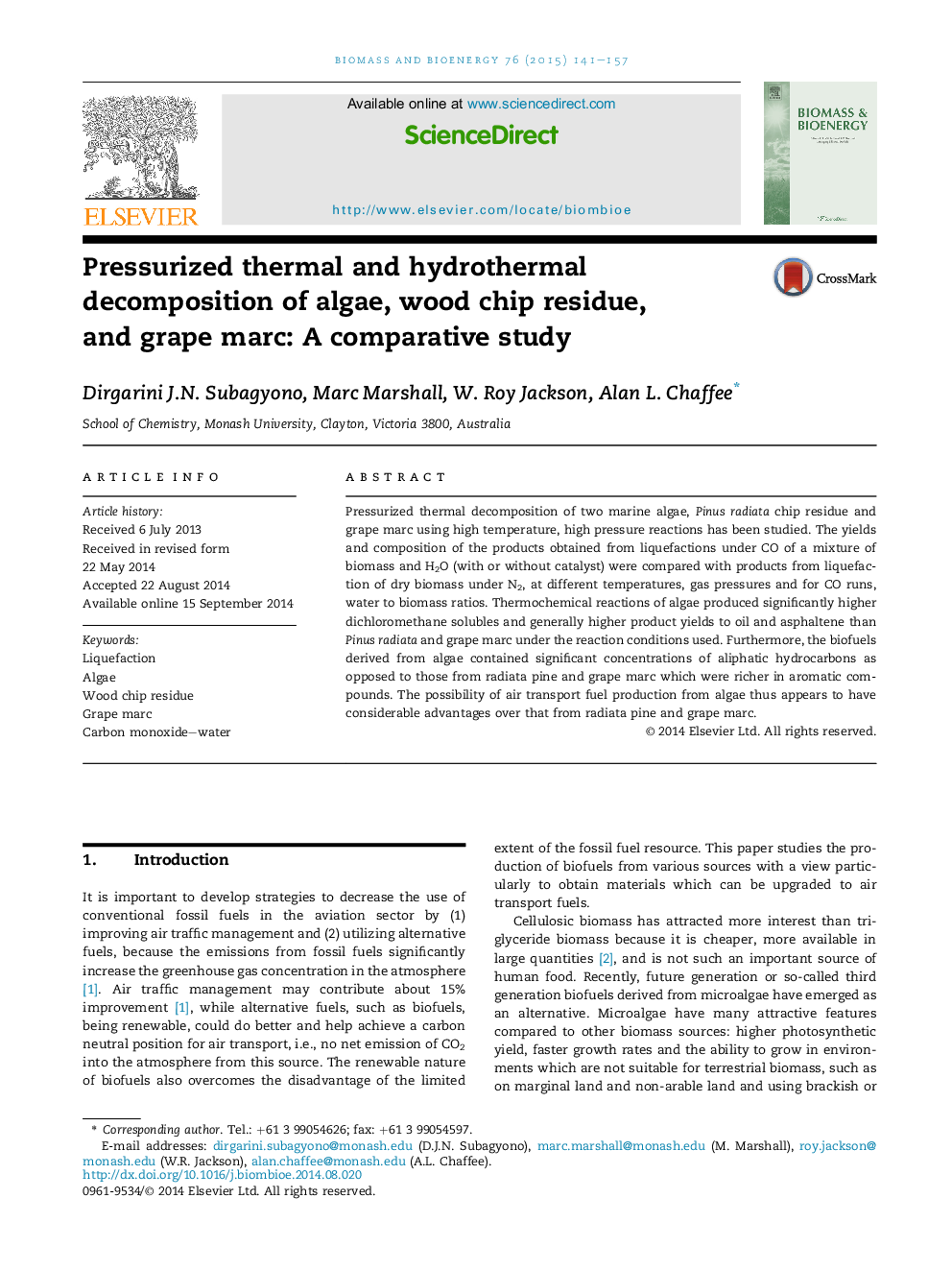| Article ID | Journal | Published Year | Pages | File Type |
|---|---|---|---|---|
| 676797 | Biomass and Bioenergy | 2015 | 17 Pages |
•Liquefaction of algae gave more oil than that of Pinus radiata and grape marc.•Reactions under CO/H2O produced higher yields of oil than N2.•Water to biomass ratio had little effect on the yields.•Bio-oil from algae contained substantial amounts of aliphatic hydrocarbons.•Pinus radiata oil was low in N but high in O.
Pressurized thermal decomposition of two marine algae, Pinus radiata chip residue and grape marc using high temperature, high pressure reactions has been studied. The yields and composition of the products obtained from liquefactions under CO of a mixture of biomass and H2O (with or without catalyst) were compared with products from liquefaction of dry biomass under N2, at different temperatures, gas pressures and for CO runs, water to biomass ratios. Thermochemical reactions of algae produced significantly higher dichloromethane solubles and generally higher product yields to oil and asphaltene than Pinus radiata and grape marc under the reaction conditions used. Furthermore, the biofuels derived from algae contained significant concentrations of aliphatic hydrocarbons as opposed to those from radiata pine and grape marc which were richer in aromatic compounds. The possibility of air transport fuel production from algae thus appears to have considerable advantages over that from radiata pine and grape marc.
